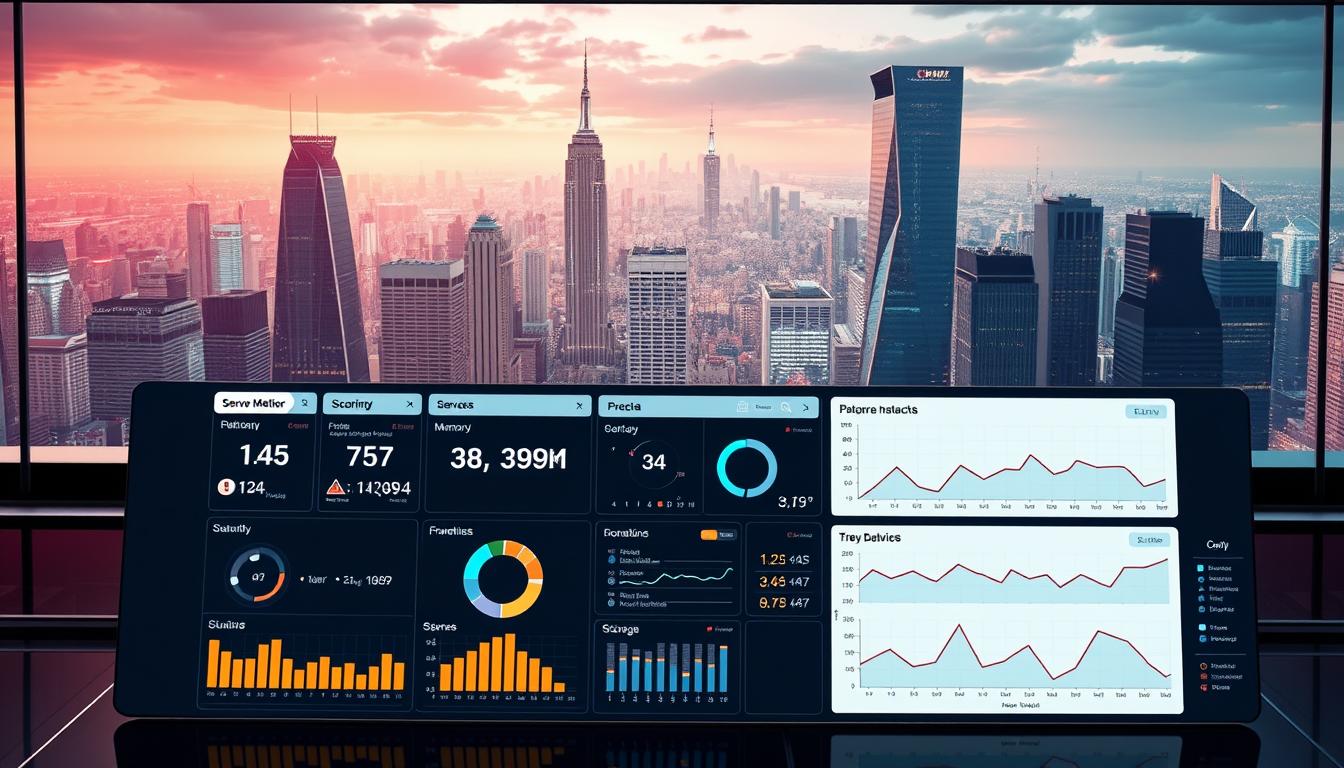In the realm of cloud server management, the deployment of appropriate monitoring tools is paramount. These tools facilitate the attainment of real-time insights into server performance, thereby enabling the identification and rectification of operational hitches. Such capabilities are instrumental in enhancing user experience and optimizing business operations.
The significance of monitoring tools in the digital era cannot be overstated. They empower users to monitor critical performance metrics, thereby fostering data-driven decision-making. By leveraging these tools, one can pinpoint areas for enhancement, minimize downtime, and elevate operational efficiency. Consequently, the performance of cloud servers can be significantly enhanced, thereby contributing to overall business success.
Understanding the Importance of Cloud Server Performance Monitoring
In the realm of cloud server management, the criticality of cloud server performance monitoring cannot be overstated. This endeavor entails the meticulous tracking of diverse metrics to guarantee the server’s optimal functionality. Such vigilance enables the early detection of potential malfunctions, thereby enhancing the overall user experience.
The realm of performance monitoring matters encompasses several pivotal considerations. It necessitates the monitoring of metrics such as CPU, memory, and disk usage to attain a holistic understanding of server performance. This data facilitates the making of strategic decisions regarding resource allocation, upgrades, and other adjustments to sustain peak performance levels.
Among the key metrics to track, several stand out:
- CPU usage: Monitoring the percentage of CPU resources utilized aids in identifying potential bottlenecks.
- Memory usage: Tracking the amount of memory employed ensures the server’s resource sufficiency.
- Disk usage: Observing disk space and usage prevents storage-related complications.
By prioritizing cloud server performance monitoring and monitoring these critical metrics, one can guarantee the server’s efficient and effective operation. This, in turn, results in enhanced user experience, increased productivity, and minimized downtime. It is imperative to recognize that performance monitoring matters, and through a proactive stance, one can preemptively address potential issues, thereby maintaining optimal server performance.
Key Features to Look for in Monitoring Tools
In the realm of cloud server optimization, the selection of monitoring tools necessitates a focus on specific attributes. These attributes are pivotal in enhancing server performance and, by extension, business operations. The inclusion of real-time data analytics is paramount, facilitating swift decision-making. Customizable dashboards, too, hold significant value, enabling the tailoring of the tool to align with your unique operational requirements and emphasizing critical performance metrics.
The capacity of monitoring tools to deliver real-time data analytics stands as a cornerstone, empowering immediate responses to performance fluctuations in your cloud server. This capability is indispensable for maintaining server efficiency, thereby reducing downtime and enhancing user satisfaction. Furthermore, the adaptability of customizable dashboards empowers you to concentrate on the metrics that are most germane to your enterprise, streamlining the identification of areas ripe for enhancement.

- Real-time data analytics to inform decision-making
- Customizable dashboards to prioritize key metrics
- Alerts and notifications to ensure prompt response to issues
By meticulously evaluating these attributes, you can select monitoring tools that are not only congruent with your operational needs but also instrumental in realizing your business objectives.
Top Monitoring Tools for Cloud Server Performance
In the realm of cloud server performance monitoring, the selection of appropriate tools is paramount. The plethora of options available can be daunting, necessitating a discerning choice tailored to your enterprise’s specific needs. Fortunately, certain monitoring tools have distinguished themselves, including Amazon CloudWatch, Datadog, New Relic, and SolarWinds. These tools offer a suite of functionalities and advantages, pivotal in optimizing your cloud server’s performance and ensuring its seamless operation.
Key attributes to seek in superior monitoring tools encompass real-time analytics, customizable dashboards, and sophisticated alert systems. These functionalities empower you to maintain vigilance over your cloud server’s performance, promptly identifying potential issues. Leveraging tools such as Amazon CloudWatch, Datadog, New Relic, and SolarWinds, you can derive invaluable insights into your server’s performance, facilitating informed decisions to enhance its functionality.

- Improved cloud server performance
- Increased uptime and availability
- Enhanced security and compliance
- Better decision-making with data-driven insights
Opting for the most suitable monitoring tools for your enterprise ensures your cloud server operates at peak efficiency, delivering an exemplary user experience.
Comparing Pricing Models of Popular Monitoring Tools
In the realm of cloud server monitoring, the selection of a tool necessitates a thorough examination of its pricing models. It is imperative to weigh the financial implications against the benefits of free vs. paid options and subscription pricing structures. This evaluation is crucial to ascertain which model aligns most closely with your enterprise’s fiscal and operational requirements.
The degree of support and the array of features provided by each pricing tier are pivotal considerations. Some tools may proffer rudimentary functionalities at no cost, whereas others necessitate a financial commitment for access to more sophisticated capabilities and support.
Several elements must be scrutinized when assessing pricing models:
- Cost: What are the upfront and ongoing costs of the tool?
- Features: What features are included with each pricing model?
- Support: What level of support is offered with each pricing model?
Through meticulous analysis of these aspects and a consideration of your business’s specific needs, you can select a monitoring tool whose pricing model is congruent with your financial constraints and operational objectives.
Implementing Monitoring Tools for Your Cloud Environment
The implementation of effective monitoring tools is paramount for the optimal performance of your cloud server. To maximize the utility of your monitoring solution, it is essential to adopt industry-proven best practices. This entails integrating the tools with your existing infrastructure and regularly reviewing and adjusting the tracked metrics to align with your evolving business needs.
By seamlessly integrating your monitoring tools with other systems, you can gain a comprehensive view of your cloud environment’s health. This integration streamlines your operational workflows. Furthermore, consistently reviewing and refining the monitored metrics will help you identify areas for improvement. This enables you to make informed decisions to optimize your cloud server’s performance over time.
Effective cloud server monitoring is an ongoing process. It necessitates vigilance and continuous evaluation of your monitoring strategy. Making adjustments as needed ensures your cloud infrastructure operates at peak efficiency. This delivers the reliability and responsiveness your business demands.
